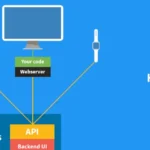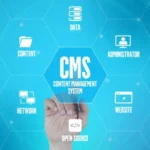Have you ever wasted hours searching through scattered files, outdated PDFs, or endless email threads just to find one technical guideline? You’re not alone. For many companies, managing documentation is one of the most frustrating — and underestimated — challenges. That’s where a content management system for technical documentation steps in as a game-changer.
From engineering teams writing product manuals to software companies building developer portals, a well-structured CMS transforms chaos into clarity. It doesn’t just store files — it empowers collaboration, version control, and seamless content delivery. In today’s fast-moving industries, where precision and accessibility are critical, the right CMS isn’t a “nice-to-have”… it’s essential.
What is a Content Management System for Technical Documentation?
A content management system for technical documentation (often called a Docs CMS) is a specialized platform that helps organizations create, organize, publish, and maintain technical content in a centralized way. Unlike a general-purpose CMS (like WordPress), a Docs CMS is designed with the unique needs of engineers, product teams, and technical writers in mind.
Think of it as a digital hub where every piece of documentation — user manuals, API references, troubleshooting guides, SOPs, or release notes — lives in one structured, searchable space. Instead of juggling multiple Word files or scattered wikis, teams get:
- Centralized storage → One source of truth for all technical documents.
- Version control → Track changes, roll back to earlier versions, and manage updates safely.
- Collaboration tools → Writers, editors, and subject matter experts can work together seamlessly.
- Publishing flexibility → Deliver documentation in multiple formats: web-based portals, PDFs, or knowledge bases.
- User access management → Restrict sensitive documents to specific roles or departments.
In short, a Docs CMS isn’t just about storing content — it’s about making technical knowledge accessible, accurate, and up-to-date for both internal teams and end-users.
What does a Content Management System do for Technical Documentation?
A content management system for technical documentation takes the complexity out of writing, updating, and sharing highly detailed information. Instead of teams drowning in scattered files and manual updates, a Docs CMS streamlines the entire documentation lifecycle. Here’s what it really does:
1. Centralizes Knowledge
All manuals, API references, onboarding guides, and policies live in one structured platform. No more hunting through email attachments or outdated drives — there’s a single source of truth.
2. Enables Collaborative Writing
Multiple contributors can work on the same document simultaneously. Writers, engineers, and product managers can review and comment in real time, cutting down feedback loops.
3. Ensures Accuracy with Version Control
Every change is tracked. If a new release introduces errors in the docs, teams can roll back to previous versions instantly. This is crucial for compliance-heavy industries.
4. Supports Multi-Channel Publishing
A Docs CMS doesn’t lock content into one format. You can publish once and distribute across different channels: web-based portals, interactive help centers, PDFs, or even embedded tooltips.
5. Improves Accessibility & Searchability
Powerful indexing and search features let users find answers in seconds — whether it’s a developer debugging code or a customer troubleshooting an error.
6. Manages User Permissions
Not all content should be public. A CMS lets you define access levels — for example, internal engineering notes can stay private, while user-facing manuals remain public.
In short, a CMS doesn’t just “hold” documentation — it transforms static files into a dynamic knowledge ecosystem that evolves with your product and organization.
When Does Purchasing a Content Management System First Start to Pay Off ?
Investing in a content management system for technical documentation can feel like a big step — especially if your team is small or just starting out. The payoff, however, comes surprisingly fast once certain conditions kick in.
Here’s when companies typically start seeing real value:
1. When Documentation Volume Increases
As soon as your product grows beyond a few simple guides, managing updates across multiple files becomes messy. A CMS pays off once your team is spending more time searching, duplicating, or fixing docs than actually writing new ones.
2. When Multiple Contributors Are Involved
If more than one technical writer, engineer, or product manager is touching documentation, version conflicts and outdated drafts creep in. A CMS centralizes collaboration and eliminates “which file is the latest?” headaches.
3. When Frequent Updates Are Needed
In fast-moving industries (like SaaS, medical devices, or engineering), manuals and release notes change constantly. A CMS saves time by letting you update once and publish everywhere — instead of editing dozens of separate files.
4. When Customers Rely on Documentation for Support
If your support tickets are piling up with questions already answered in documentation, that’s a sign. A CMS with strong search and accessibility reduces support workload, directly cutting costs.
5. When Compliance and Traceability Become Critical
In regulated sectors (finance, healthcare, aerospace, etc.), you must prove accuracy and track changes. A CMS pays off here by providing audit trails and version history — protecting your company legally and financially.
Rule of thumb: A CMS starts paying for itself when the cost of wasted time, duplicated effort, or customer confusion outweighs the licensing and setup costs of the system. For many teams, this happens far earlier than expected — often once you hit 50–100 documents or a handful of contributors.
Read:
How Do I Find the Right CMS for Creating My Technical Documentation?
Choosing the best content management system for technical documentation isn’t about picking the most feature-packed tool. It’s about matching the system to your team’s workflow, content type, and long-term goals. Here’s a framework to help you decide:
1. Define Your Documentation Needs
- What types of content will you manage? (API docs, manuals, SOPs, tutorials)
- Who is your main audience? (internal teams, developers, end-users, auditors)
- Do you need multi-language or multi-format publishing?
2. Assess Collaboration & Workflow
- Does your team need real-time editing like Google Docs, or structured authoring with approvals?
- Can reviewers easily leave comments and track changes?
- Does it integrate with your existing tools (e.g., GitHub, Jira, Slack)?
3. Check for Version Control & Compliance
- Can you track every edit and roll back if needed?
- Does it support audit trails for regulated industries?
- How well does it handle branching and merging content (useful for product release cycles)?
4. Evaluate Publishing Options
- Does the CMS let you write once and publish everywhere (web, PDF, help center)?
- Can you customize branding and layout for customer-facing portals?
- Is the search functionality powerful and intuitive?
5. Consider Scalability & Costs
- Will it grow with your documentation needs as your product expands?
- Is pricing based on users, documents, or storage?
- Does it offer cloud hosting, on-premises, or hybrid options to fit your IT requirements?
6. Test Before You Commit
- Use free trials or demos to see if the UI is intuitive for your writers.
- Involve both writers and developers in the evaluation process.
- Run a small pilot project to confirm performance before migrating all content.
Pro tip: The “right” CMS isn’t necessarily the most popular one — it’s the one that makes creating, updating, and delivering documentation easier for your specific team and audience.
What are the disadvantages of a CMS for technical documentation?
While a content management system for technical documentation offers huge benefits, it’s not a magic bullet. Like any tool, it comes with trade-offs. Here are the main drawbacks to consider before investing:
1. Cost of Implementation
Enterprise-grade CMS platforms can be expensive. Beyond licensing, you may need to budget for setup, training, migration, and ongoing maintenance. For smaller teams, this can feel like overkill.
2. Learning Curve for Teams
Technical writers, developers, and reviewers may need time to adapt to the new system. If the CMS is too complex or poorly designed, adoption rates can suffer — leaving you with a half-used tool.
3. Setup and Customization Effort
Many CMS platforms require configuration to fit your workflow (templates, permissions, integrations). Until these are set up properly, efficiency gains may not be obvious.
4. Dependence on Vendor or IT Support
Some CMSs are cloud-hosted and lock you into a vendor’s ecosystem. Others need heavy IT involvement for updates and troubleshooting. Either way, reliance on outside support can slow down urgent documentation updates.
5. Risk of Over-Engineering
Not every team needs advanced workflows, branching, or multi-channel publishing. Choosing a too-powerful system can lead to unnecessary complexity — when a simpler solution (like a lightweight docs platform or static site generator) would suffice.
6. Possible Performance Issues
If poorly configured, a CMS can slow down as the number of documents and users grows. This impacts both writers (while editing) and readers (while searching).
Bottom line: A CMS pays off most when documentation volume, compliance needs, or collaboration challenges are high. For very small teams or simple projects, the disadvantages may outweigh the benefits.
What Does a CMS for Technical Documentation Cost?
The price of a content management system for technical documentation can vary widely depending on the type of solution, team size, and features. Here’s a breakdown of what you can expect:
1. Open-Source CMS (Free – Low Cost)
- Examples: Docusaurus, MkDocs, MediaWiki.
- Cost: Free to download and use, but you’ll pay for hosting, customization, and developer time.
- Best for: Startups or technical teams comfortable managing infrastructure.
2. Mid-Tier SaaS Solutions ($10 – $50 per user/month)
- Examples: Confluence, Notion, Document360.
- Cost: Typically charged per user or per document space.
- Best for: Small to mid-sized teams that want quick setup with minimal IT overhead.
3. Enterprise-Grade CMS ($500 – $2,000+ per month)
- Examples: Paligo, MadCap Flare, Adobe Experience Manager.
- Cost: Often includes licensing fees, onboarding, training, and support.
- Best for: Large organizations with complex documentation, compliance needs, and multi-language publishing.
4. Hidden Costs to Consider
- Migration: Moving legacy docs into a CMS can take weeks or months.
- Customization: Templates, integrations, and branding may require developer resources.
- Training: Onboarding technical writers and reviewers adds to the initial cost.
- Maintenance: Ongoing updates, support, and scaling as your content library grows.
Rule of thumb:
- Small teams can often get started for under $100/month.
- Growing organizations usually budget $500–$2,000/month for advanced features.
- Enterprises with global operations may spend $50K+ annually for robust, scalable systems.
What are the 4 types of technical documentation?
Not all documentation serves the same purpose. A content management system for technical documentation usually has to handle several content types at once. The four main categories are:
1. Product Documentation
- Purpose: Explains how a product works.
- Examples: User manuals, installation guides, release notes, troubleshooting instructions.
- Audience: End-users, customers, and support teams.
2. Process Documentation
- Purpose: Describes internal procedures and workflows.
- Examples: Standard operating procedures (SOPs), quality assurance guidelines, onboarding checklists.
- Audience: Employees, compliance officers, auditors.
3. System Documentation
- Purpose: Covers the technical design and inner workings of a system or software.
- Examples: Architecture diagrams, API references, source code documentation, configuration details.
- Audience: Developers, system administrators, IT teams.
4. Training & Knowledge Documentation
- Purpose: Provides educational or skill-building material.
- Examples: Tutorials, e-learning modules, FAQs, knowledge base articles.
- Audience: New hires, partners, or customers who need to learn how to use a product or process.
Pro tip: A robust CMS should allow you to manage all four types in one place, ensuring consistency, easy updates, and reliable access for different audiences.
What is the content of technical documentation?
| Type of Content | Purpose | Examples | Audience |
|---|---|---|---|
| Product Information | Explain what the product is and how it works | Features, specifications, system requirements, compatibility | Customers, end-users, support teams |
| Instructions & Procedures | Provide step-by-step guidance | Installation manuals, workflows, troubleshooting guides | Customers, employees, service teams |
| Reference Materials | Offer detailed technical data | API docs, configuration files, error code lists | Developers, engineers, IT professionals |
| Visuals & Media | Simplify complex concepts | Diagrams, flowcharts, screenshots, tutorial videos | All users (technical and non-technical) |
| Compliance & Safety | Ensure legal and regulatory alignment | Safety warnings, disclaimers, change logs, audit documentation | Compliance officers, auditors, legal teams |
| Supportive Resources | Help users deepen knowledge or self-solve | FAQs, best practices, glossaries, training materials | Customers, new hires, partners |
Key takeaway: A content management system for technical documentation should support all six types of content in one place, ensuring consistency, compliance, and accessibility.
FAQ
1. What is a CMS for technical documentation?
A CMS (Content Management System) for technical documentation is a platform that helps teams create, organize, update, and publish technical content such as manuals, API references, SOPs, and knowledge base articles.
2. Why use a CMS instead of traditional documents or wikis?
Unlike static files or basic wikis, a CMS offers version control, multi-channel publishing, user permissions, and collaboration tools — making documentation easier to maintain and scale as products evolve.
3. How much does a CMS for technical documentation cost?
- Open-source solutions: Free to use, but you’ll pay for hosting and developer setup.
- SaaS platforms: $10–$50 per user/month.
- Enterprise CMS: $500–$2,000+ per month, depending on features and support.
4. What are the disadvantages of using a CMS?
Costs, training needs, vendor dependence, and setup complexity can be challenges. For very small teams, a full CMS may be more than they need.
5. Can a CMS handle multiple types of documentation?
Yes. A robust CMS can manage product manuals, process documents, system references, compliance files, and training materials all in one centralized platform.
6. When does a CMS start to pay off?
Typically when your documentation grows beyond a few dozen files, involves multiple contributors, requires frequent updates, or needs compliance-level version tracking.
7. What features should I look for in a CMS for documentation?
Key features include:
- Version control and rollback
- Collaboration and review workflows
- Multi-channel publishing (web, PDF, portal)
- Strong search and indexing
- Access and permission management
- Scalability for future growth
Conclusion
A content management system for technical documentation is more than just a storage tool — it is the backbone of efficient, accurate, and scalable knowledge management. From product manuals to compliance files, a CMS ensures your documentation stays organized, accessible, and always up to date.
While the investment requires careful consideration of costs, training, and setup, the long-term benefits — reduced support costs, faster collaboration, and improved customer satisfaction — far outweigh the drawbacks.
Whether you are a startup struggling with scattered files or an enterprise managing thousands of documents, the right CMS can transform documentation from a burden into a strategic asset.
Next step: Evaluate your team’s needs, test a few platforms, and choose a CMS that balances functionality with usability. The sooner you adopt the right system, the faster your documentation will shift from chaos to clarity.



